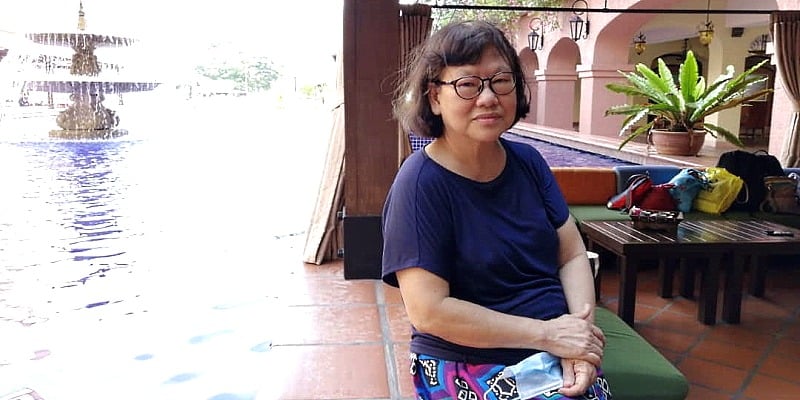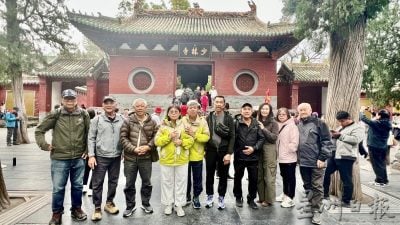
The white paper on “The Taiwan Question and China’s Reunification in the New Era” issued by China last Wednesday (Aug 10) has indicated Beijing’s resolve to regain control of Taiwan and this goal may be achieved in the foreseeable future.
The time frame of Taiwan’s takeover has become clearer: it is likely to fall within the next five years under the reign of President Xi Jinping, widely expected to seek third term to rule China when the Communist Party of China (CPC) holds its congress in November this year.
Notably, the policy document has outlined Beijing’s plans for post-reunification governance over Taiwan and promised a bright economic future for the island.
While Beijing still prefers a peaceful unification process, it does not rule out the use of force to take back the island, historically recorded as a part of China.
The white paper, viewed as a very timely and important policy statement, has pointed out that peaceful reunification plan has been undermined by secessionists, the ruling Democratic Progressive Party (DPP) led by Tsai Ing-wen, and external forces led by the United States.
Hence, it is not a surprise that the white paper has pointedly warned against foreign interference by the US and its allies. It has stated reunification cannot be stopped by outside forces.
For the Taiwan audience, the white paper has restated Beijing’s policy to adopt “one country, two systems” rule after unification. It has also outlined the direction of trade and economic development under China’s embrace.
For observers, the release of this white paper is timely, as it was issued following China’s aggressive military drills encircling Taiwan and cutting off its air and water transport for days in strong protest against the recent ‘provocative’ visit of the Speaker of the US House of Representatives Nancy Pelosi, seen by Beijing as violating the one-China policy endorsed by the US and the United Nations.
These military drills of unprecedented scale conducted by the People’s Liberation Army (PLA), short of capturing Taiwan militarily, have sent a strong warning to the island’s ruling DPP, whose leaders had welcomed Pelosi with open arms and red carpet.
But soon after the party was over in Taipei, Beijing began to flex its growing military might that even some Western military commentators watched in awe.
What is worrying for the US is that China has also cut off military communications with Washington, which may lead to risky and wrong assessment of situations.
However, for the US and Western allies keen on meddling with Taiwan affairs to contain China, these exercises have given a clue to PLA’s ability to blockade the island as a prelude to a takeover.
During the drills, the PLA fired ballistic missiles over Taiwan for the first time, and simulated air and sea attacks on ships on its east coast.
The PLA’s extended military exercises last week also indicates that its heavy presence around Taiwan will become a ‘new normal’. China has declared this intention to deter foreign interference.
For many Chinese observers, Pelosi’s visit to the island has actually generated a good opportunity for China to justify and speed up the reunification process, a rhetoric previously seen as empty.
While some analysts see the reunification process as starting with this white paper, no one actually sees the realization of this dream coming soon due mainly to geopolitical concerns and the US-China tech war. It seems that China is not ready to take any miscalculated risk.
Although a military takeover cannot be ruled out, the white paper shows that Beijing still prefers to reunify Taiwan through peaceful means.

In fact, Xi has in his previous policy addresses stated that “Chinese will not kill Chinese”. The price of a military takeover can be high, given that the US will not sit idle.
But if Beijing decides to force its way into Taiwan, the timing has to be right.
The ideal situation, according to some analysts, would be if Russia were to cut off its gas supply to Europe and a civil war erupted in politically-divided US.
But whatever the risks, taking over of Taiwan is most likely to occur during Xi’s time.
Expectations are high among the 1.4 billion mainlanders that Xi will carry out this task during his tenure.
Hence, many Chinese analysts expect unification to take place before November 2027, when Xi’s next five-year term ends.
Prominent analyst Yang Fong has predicted this to take place in the earlier part of 2023-2027.
However, from now on, Beijing can expect more Western provocations to hike up tensions. The manipulative use of Taiwan card by the West against China will never end.
Apart from more provocations, a big threat is looming for China as the US Congress is contemplating on the “Taiwan Policy Act of 2022”, seeking to designate Taiwan a “major non-NATO ally”.
Such a move will pose real military challenge if the Western world were to join forces to fight China.
Time is not on Beijing’s side, if we are to look at the Taiwanese mindset. The outcome of public polls — whether manipulated or not — should be deeply worrying for Beijing.
A recent online survey showed that about 60% of Taiwanese wanted status quo to stay, 20% wanted separation and fewer than 10% hoped for reunification.
According to foreignpolicy.com, only 2% of Taiwanese identify themselves as Chinese, down from 25% a decade ago. And ‘most’ Taiwanese public holds negative views of the CPC, do not agree with developments in Hong Kong and the “one-country, two systems” policy.
Hence, Beijing may have to wage an aggressive publicity war to win over the hearts and minds of the Taiwanese. However, as China is never known to be good at public relations, this may be an uphill task for the Chinese.
In fact, Chinese State Councilor and Foreign Minister Wang Yi is aware of these challenges faced by Beijing.
“It is necessary to be prepared for the US gathering some accomplices to pour fuel on the fire, enhancing regional military deployments, attempting to create a new and bigger crisis,” he said last week.
He added ‘Taiwan independence’ forces might continue to ‘collude with’ external forces to further split the country and politicians in some countries may take after Pelosi for political gain.
Wang noted that the mainland’s policies have always been blocked or distorted by DPP-controlled media on the island to promote independence.
Lü Xiang, a research fellow at the Chinese Academy of Social Sciences, told Global Times that “the US will pose the biggest threat to China’s reunification as the Taiwan authorities and other US allies only dare to follow or assist what the US plans to do.”
It is clear that for China, a peaceful reunification is a goal too remote to achieve now. However, the option of force should be the last resort to cut down loss of lives.
Whatever decision China takes, Taiwan’s issue needs to be resolved to bring about peace and stability to South East Asia, Asia and the world.
(Veteran writer Ho Wah Foon is a freelance journalist after retiring as editorial consultant from The Star. Prior to this, she had worked for Reuters, Chinese Forbes magazine, The Straits Times of Singapore and The Edge. The views expressed here do not represent those of Sin Chew group.)
ADVERTISEMENT
ADVERTISEMENT


































